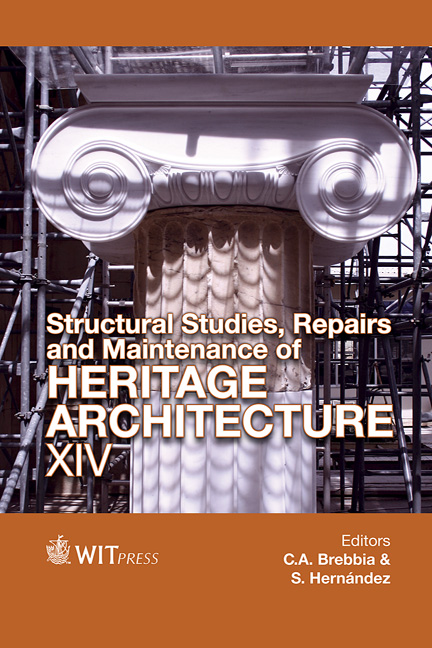Energy Models Towards The Retrofitting Of The Historic Built Heritage
Price
Free (open access)
Transaction
Volume
153
Pages
12
Page Range
159 - 170
Published
2015
Size
3,596 kb
Paper DOI
10.2495/STR150141
Copyright
WIT Press
Author(s)
F. Fatiguso, M. De Fino, E. Cantatore, A. Scioti, G. De Tommasi
Abstract
Scientific community and government institutions have acknowledged energy-retrofitting solutions for historic buildings as strategic within the EU “20-20-20” target, provided that they should be developed from the assessment of the local environment. Geographic–climatic conditions of site, historic–morphological development of settlement, typological–architectural configuration of buildings and construction–technical characteristics of components feature that environment, which shapes the domain, where expected performances of requalification products and processes might be defined. The final goal is the challenging and desirable balance among conservation of original material and formal identity, enhancement of present and potential relationships between indoor space and outdoor environment, technological improvement of construction systems. The paper is going to discuss an assessment methodology, applied to the historic sea towns in the Province of Bari, South Italy. Specifically, the methodology focuses on the investigation of all the above-mentioned aspects, also by means of analytical simulations, onsite measurements and thematic maps, in order to develop reliable energy models for historic buildings. The models should support the analysis of the relationships between performances of building sub-systems and efficiency of building system, always taking into account the transformation boundaries of the envelope, towards efficient, compatible and convenient energy-retrofitting solutions.
Keywords
historic built heritage, energy assessment models, innovative retrofitting solutions




